The Steps We Need To Take To Correct Our Climate Course
This post, a reflection on the 2020 24 Hours of Reality: Countdown to the Future from the Climate Reality Project, talks about electric cars, the climate crisis and actions we all can take to help solve it, including driving electric vehicles (EVs).
A Quick EV History
The first mainstream EVs in the U.S appeared a decade ago, as the all-electric Nissan Leaf and the Chevrolet Volt plug-in hybrid. Today, major companies, including BMW, FCA, Ford, GM, Hyundai/Kia, Mercedes-Benz, Volkswagen and Volvo (among others) are proudly announcing their upcoming electric models (while continuing to sell lots of internal combustion vehicles).
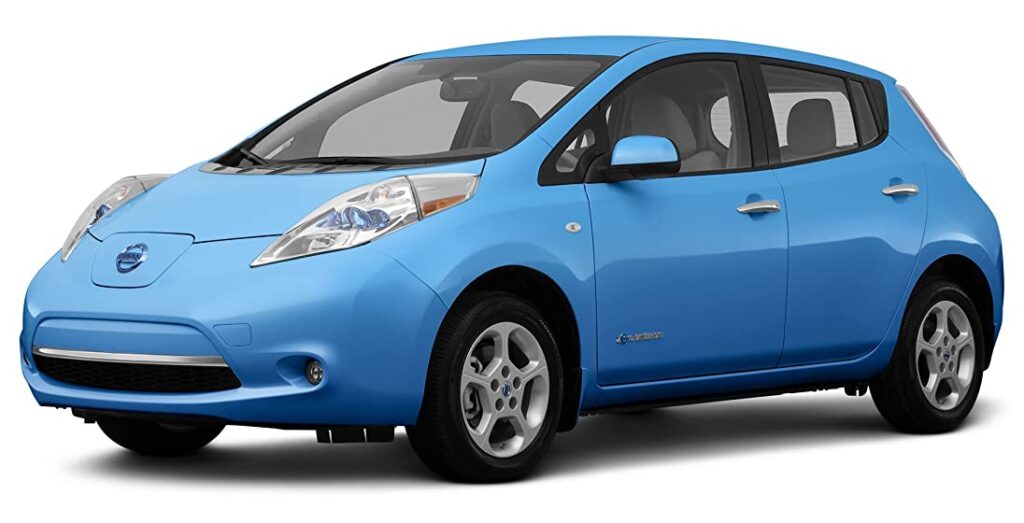
EV sales, juiced by Tesla’s success, are increasing every year, but still represent a small percentage of the market. Tesla, of course, sells only EVs. Many countries (and even some states and cities) are passing legislation to support the phasing out of gasoline-powered cars in the next 10-15 years.
EV Benefits and Challenges
Electric cars have a lot to offer. They are smooth and quiet. Electric motors deliver all of their torque the moment they start working, so acceleration is amazing, and the low center of gravity from the battery pack helps them handle well.
Electric drivetrains contain a lot fewer parts, so there is much less to go wrong, and routine service is minimal (forget oil changes, tune-ups, radiator flushes and even brake pad replacement thanks to regenerative braking).
EVs have no tailpipe emissions, but are not 100 percent clean, of course, because like all cars, their production uses energy from various sources. Some companies, including GM, are working to use renewable energy in their vehicle production. Some of the materials for today’s EV batteries must be mined, sometimes in dangerous and unsustainable ways. This issue must be addressed and solved.
There can be some inconveniences. EVs take longer to charge, and there are fewer places to charge them today than there are gas stations. Although the charging networks are expanding, this uncertainty can create “range anxiety,” although most people hardly ever drive more than about 40 miles a day, and modern EVs feature more than 200 miles of range. The ideal place to charge your EV is at home, but some people live in apartments. Some workplaces provide charging, as well. The charging network is being built out and should not be much of an issue at some point in the future.
Right now, there are fewer category and style choices in EVs than there are in the overall market. However, that will change over the next few years, as more companies roll out a range of attractive and powerful models. There are a number of affordable choices today, such as the Kia Niro, Chevrolet Bolt and the second-generation Nissan Leaf. On the luxury side, you can get an electric Porsche (Taycan), Jaguar (I-Pace) and Audi (E-Tron) now. Mercedes-Benz and BMW have exciting EV models on their way. There are many more. Electric pickups are on the way soon from Tesla (Cybertruck), Ford (F-150) and GMC (Hummer), among others.
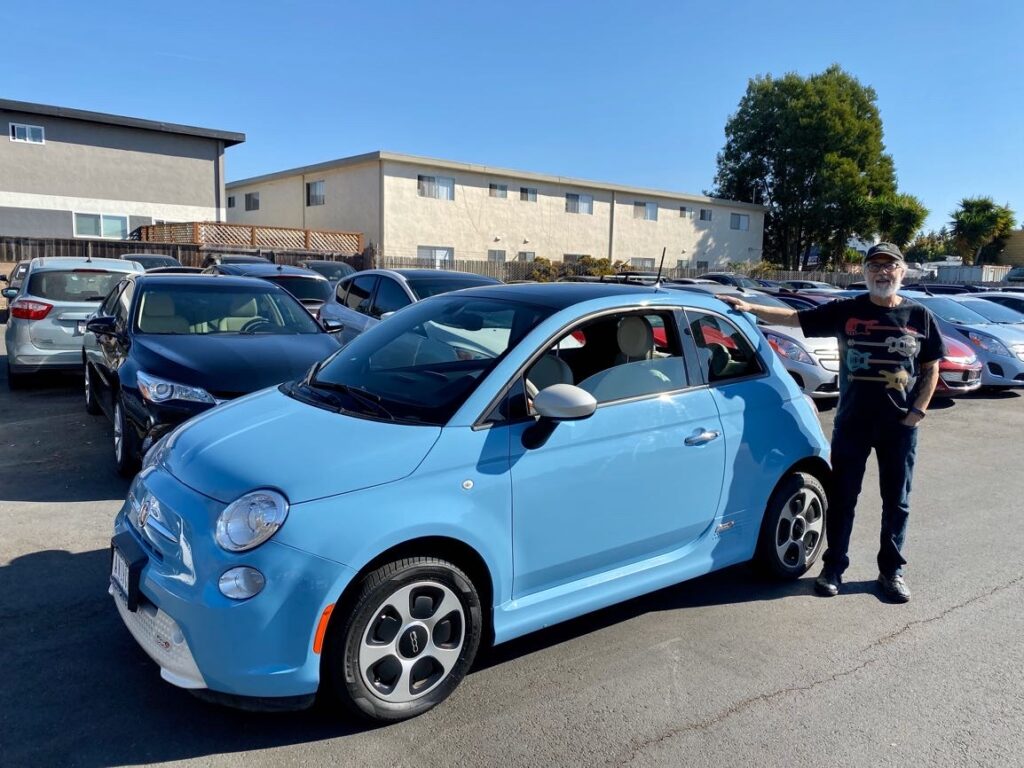
The second-hand EV market is filled with bargains, if you’re willing to drive a car with a shorter range. Three-year-old vehicles can change hands at a fraction of their initial price. I picked up my pristine three-year-old Fiat 500e, with 25,000 miles on it, for less than a third of its original 2017 retail price. However, its range is only 90 miles, which means I can’t use it for long trips. These older EVs make great commuter shuttles and second cars.
Some brands now sell or plan to offer plug-in hybrids, which have an electric motor and a gasoline engine too. Unlike regular hybrids, plug-in hybrids can serve as pure electric vehicles for a limited range, say 20-50 miles, depending on battery size. Plug-in hybrids are not as clean and quiet as EVs, but will be helpful transition vehicles as we move to an all-EV world someday. When the fast charging network is built out and minimum vehicle range starts at 250-300 miles, plug-in hybrids will no longer be needed.
Today, electric cars usually cost more than equivalent gasoline vehicles. This is mainly because of the high price of their batteries. However, EVs cost significantly less to operate, so there is a break-even point at which they become less expensive to run than petrol-fed models. So, you have to consider total cost of ownership when you examine the numbers. And sale/lease prices are likely to drop over the next few years as battery costs are reduced, until they reach purchase price parity with gasoline vehicles in mid-decade. At that point, with lower maintenance costs, EVs will be the better deal.
But the most important reason you should drive an electric vehicle is to help fight climate change.
Climate Change
Our planet is heating up. There may be some disagreement or confusion in the general population about what’s causing it and what we can or should do about it—and there are some climate deniers, too. But among trained scientists, there is virtual unanimity about the cause—us—and the urgency of acting quickly. The United Nations’ IPCC Report clearly states how we must all work to limit global temperature rise to 1.5 degrees Celsius (2.7 degrees Fahrenheit) to avoid the worst crises. The Paris Agreement of 2015 was held to commit all countries on a path toward achieving that goal.
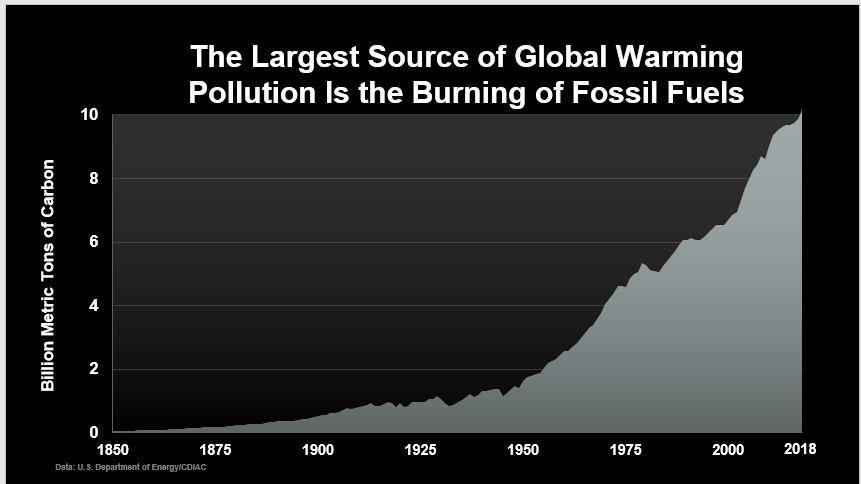
Climate change is actually not news, because experts have known about it for decades and have spoken out. But we haven’t listened or done much about it. Now, scientists say that we have about 10 years to get it handled or it could spiral out of control.
How did this happen? With a population rapidly approaching 8 billion, human activities are now substantial enough to change the planet. Every day, we spew about 110 million tons of manmade global warming pollution into our atmosphere. It comes from various sources, but the major one is the burning of fossil fuels. The atmosphere is only a very thin shell around the earth. As more CO2 accumulates, the atmosphere traps more heat, causing global warming. The science is unambiguous on this.
So, what does it matter how warm the planet is? The problem with the earth heating up is that it disrupts the stable conditions we’ve lived with for the last 10,000 years or so. Global average temperatures have climbed significantly over the last 40 years. Scientists are concerned that we could eventually have some areas of the earth that are uninhabitable, and the people who have to leave there will create refugee crises.
One visible issue with global warming is the melting of glaciers, especially in the polar regions, where temperatures have risen alarmingly. The water from this melt will raise sea levels worldwide, flooding coastal cities.
Someone could ask: “So what do a couple of degrees matter?” Think of it like when a person is sick and has a fever. Even a couple of degrees of difference upsets the body’s processes, and if a fever is too high, death occurs.
Climate disruption also means that global air flows, such as the jet stream, slow down and get a little out of whack, for example, allowing cold air to move from the Arctic into places that are normally not frozen, like the middle of the U.S. Conversely, the Arctic gets 100-degree temperatures, speeding the melting of polar ice.
The oceans are absorbing a lot of the excess heat, and the warmer air above them holds more moisture. This leads to bigger, stronger storms. A lack of rain in the western U.S. causes draughts, so there are more dead trees, which along with rising temperatures, increases wildfires, as we’ve seen in the last few years. This year, 2020, has already been disastrous in the West, and the fire season isn’t over yet.
Disruption is insidious. What if the worms are ready before the birds arrive to eat them? What if the conditions for laying eggs are ideal before or after the turtles arrive? What if warmer temperatures send deadly virus-carrying mosquitos from equatorial areas to temperate regions where the population centers are? Because nature is an ecosystem, a disruption in one area affects many others. It’s all been predicted and is now beginning to happen. Scary.
The complex interactions of nature can’t be explained in a few paragraphs, but the experts who spend their lives studying the natural world and climate science are telling us that we must change our ways now to prevent the planet from accelerating its warming and becoming irreversible. The earth has a great capacity for regeneration, but we are overwhelming its ability to heal itself.
Greening Transportation Is Only Part of the Answer

Transportation contributes the largest portion of CO2 to our atmosphere—38 percent in California, where I’m located. There are many other causes, including the production of fossil fuels and burning it to generate electricity. Buildings and agriculture make a significant contribution, too. We need new homes and commercial buildings to be much greener, without burning fossil fuels, and to retrofit the old ones for much greater efficiency. All of this creates many good jobs in a green economy.
To generate clean electricity to power the electric fleets of the future, we need to stop burning coal now and move off of natural gas, too. We need to replace it with solar, wind, and other sustainable technologies. This is doable today, but change is very hard. An encouraging fact is that EVs gets cleaner and cleaner as the energy to power them does. Feeding your EV from solar panels on your roof is the ideal option, if possible.
Fossil Fuel Industry Resistance/Auto Industry Sloth
There are powerful forces at work that want to preserve the status quo. Wealthy oil industry executives are hanging onto their business model—it’s been very successful for more than a century. You can hardly blame them, from a business standpoint. But, if a habit is killing you, you need to stop doing it. Smoking is a killer too—and the answer is to put down the cigarettes.
Another issue with the fossil fuel industry is that the people who run it aren’t suffering from the impacts of climate change nearly as much as the poor people who live near oil wells and refineries or in neighborhoods blighted by freeway traffic. This is why moving to renewable energy and away from fossil fuels is a social justice issue, too. Read this report from the American Lung Association about the benefits of clean air.
The auto companies are beginning to get on the EV bandwagon, but other than Tesla, it is not where their profits come from, so they have been moving slowly. However, based on what they are saying, the expectation is that EVs will play a major role in their future products. The questions are “how much?” and “when?” GM, for example, talks about “putting everyone in an EV,” but isn’t specific about a timeline. I believe that if consumers demand electric cars, manufacturers will be more than happy to provide them. So, they are getting prepared now but are still making their profits from the SUVs and trucks that have been sustaining them for years. We can make them move faster by demanding EVs!
Let’s All Take Action
Everyone is part of the problem—environmentalists included. I have an electric car and solar panels to feed it, but my house still uses natural gas for heat, hot water and cooking. It’s very difficult –and expensive–to change our ways, which is why providing a method for preserving your lifestyle in a more responsible way is an easy sale. We can’t expect everyone to simply stop driving, can we? EVs can replace gasoline vehicles, but it’s even better if we don’t drive as much, or start riding a bicycle, or walk, or take electrified public transportation. That becomes an urban planning priority, and a lot of work is being done now in this area.
A Recent Peek at a Cleaner Future
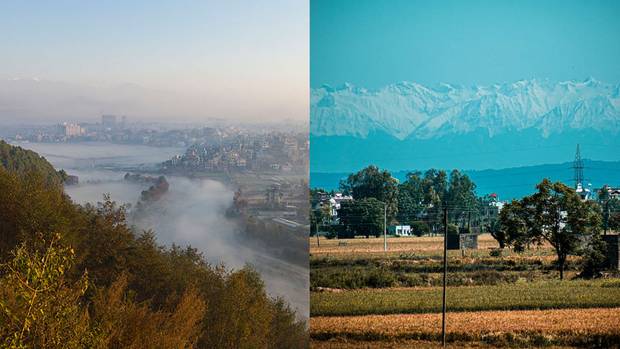
This spring, when COVID-19 shut down the world for a while, the clear blue skies of yesteryear reappeared quickly. In India, people saw the Himalayas from home for the first time in decades. You could see the difference from space! But, as we’ve resumed more of our travel, the benefits, sadly, have faded away again.
Many Actions We Can Take
There are many things we can do to keep the earth habitable for humans beyond switching to electric vehicles, but getting rid of your gas-burning car is an easy one. Changing to a more plant-based diet is hugely beneficial, too, since the meat industry causes big environmental impacts. Insulating your home and replacing your natural gas furnace with a heat pump is a great way to make an impact, too. Project Drawdown is a great resource for learning more about the many ways you can help.
It’s hard for human beings to think big picture or long range. I consider myself a climate change activist (not an expert), but there are plenty of times I’d rather go have a beer and listen to music than send emails to my congressperson about climate action or improve my house or attend a city council meeting. We all need to do what we can, and urge our local, state, and national governments to do the right thing.
We need corporate responsibility, too. A large company can have a proportionally big impact. If Google moves to renewable electricity sources for keeping their cloud servers cool, it takes a big bite out of dirty energy production. See what Climate Voice is doing on that front.
Al Gore, who’s studied climate change since he was in college and has tirelessly advocated for climate action, founded the Climate Reality Project in 2006 to train others to share the facts about climate change that he presented in his award-winning An Inconvenient Truth slideshow. You can be part of this, too. Go to The Climate Reality Project website for more information about free online trainings. I attended mine in person in Los Angeles in August 2018 and it was a revelation.
Beyond EVs
Switching to an EV helps, but maybe you don’t need a car at all! In cities, there are many options, including public transportation and shared vehicles (when there’s not a pandemic). Many people are discovering the utility of electric scooters, bicycles, and mopeds—from shared fleets or owning their own. If you’ve ever visited Amsterdam, you know that bicycles, which generate no pollution whatsoever, can be a fine way to travel, especially if cities are designed to make them safe and convenient.
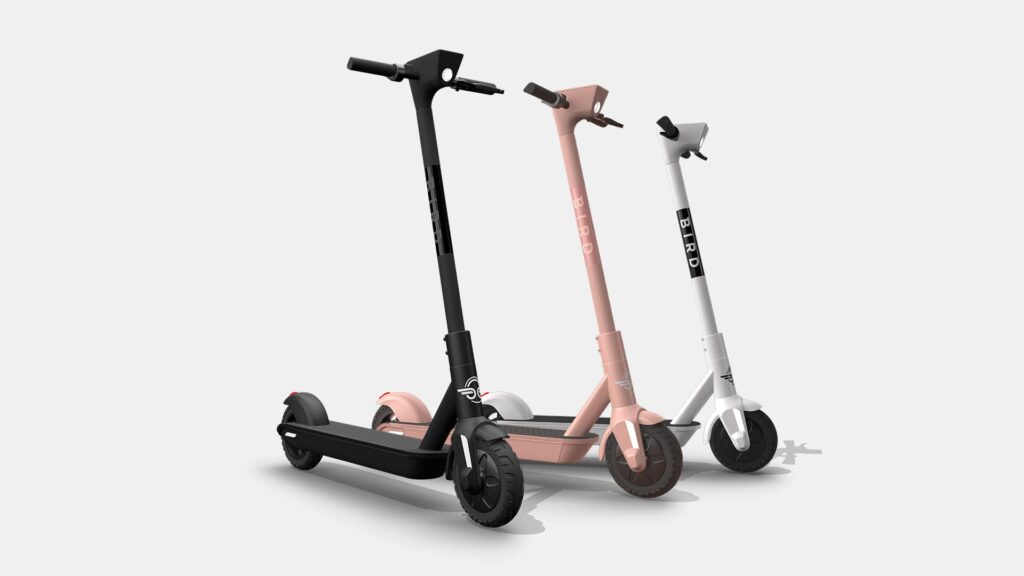
In suburban and rural communities, it’s definitely more of a challenge, but with a growing range of EV offerings, you should be able to switch over easily in the next few years. Electric pickup trucks are almost here!
The Bottom Line
Climate change is heavily driven by the burning of fossil fuels. It’s a real problem, and we have to move away from it quickly. There are many things we can and must do, but one action we can take today to lower our consumption of fossil fuels is to drive an EV instead of a gasoline car. Bonus points for riding a bike instead.
Story by Steve Schaefer; photos by Steve and the Climate Reality Project.
Related Stories You Might Enjoy—More Climate Change Background
Event: Carl Pope Talks Climate Change Hope
Personal: A Dose of Climate Reality
Buyer’s Guide: Electric Scooter Guide
Analysis: The Electric Truck Wars Have Begun

4 thoughts on “Opinion: Why We Need Electric Cars Now”